5 Simple Tips to Stop Your Toddler From Climbing Out of the Crib
If you've noticed your toddler attempting to climb out of the crib, you're not alone. Many parents face this challenge, and it can lead to sleepless nights and safety concerns. You might be wondering how to keep your little one safe and secure while encouraging good sleep habits. By making a few strategic adjustments, you can effectively reduce the chances of escape. But before you implement any changes, let's explore some practical tips that could make a significant difference in your nightly routine.
Assess the Crib Height
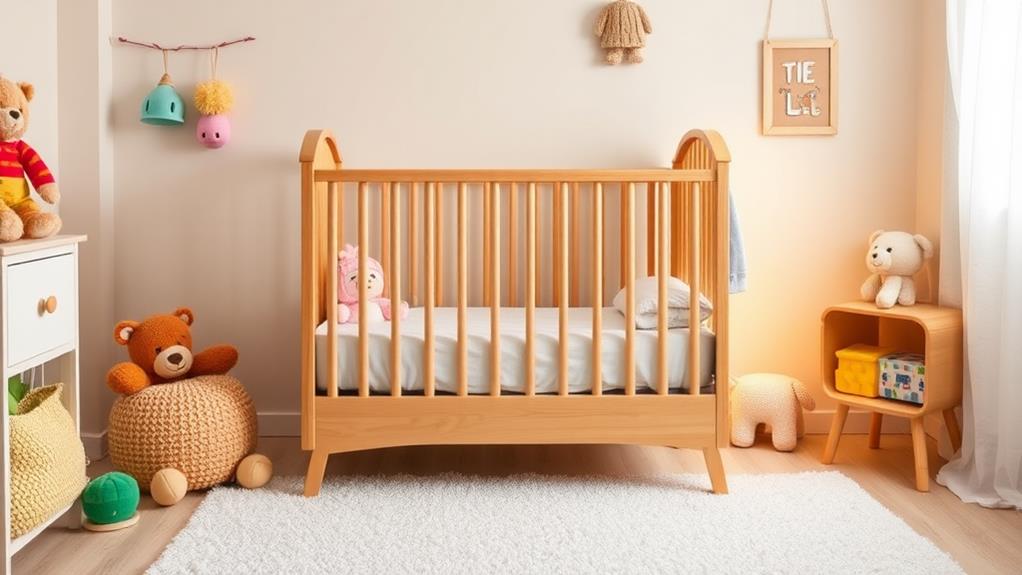
When it comes to preventing your toddler from climbing out of the crib, assessing the crib height is crucial. You'll want to check if the crib is set at the appropriate level for your child's age and height. Most cribs have adjustable mattress heights, so take advantage of this feature. If your little one is getting close to the top rail, it's time to lower the mattress.
A crib that's too high can make it easier for your toddler to scale those rails, leading to potential falls. Ideally, the top of the crib rail should be at least 26 inches above the mattress when it's set at the lowest height. This height helps ensure that your child can't easily climb over.
Additionally, consider the type of crib you have. Some cribs are designed with safety features that prevent climbing, while others may not be as sturdy.
If your toddler is particularly adventurous, you might want to invest in a crib with a higher rail. Make these adjustments, and you're one step closer to keeping your little explorer safe and sound in their crib.
Use a Sleep Sack
A sleep sack can be a game-changer for keeping your toddler from climbing out of the crib. These wearable blankets keep your child cozy and snug while limiting their movement. Unlike traditional blankets, sleep sacks are designed to stay securely in place, giving your little one a sense of security and comfort.
When you use a sleep sack, you'll find it much harder for your toddler to maneuver their legs over the crib railing. This added restriction can significantly reduce the chances of them attempting to climb out, which means fewer sleepless nights for you!
Make sure to choose a sleep sack that's the right size for your toddler. If it's too big, your child might still find a way to wiggle out of it. Conversely, a snug fit will keep them safe and comfortable.
You can find sleep sacks in various materials and thicknesses, so consider your toddler's comfort and the room temperature when selecting one. Plus, sleep sacks come in fun colors and patterns, making bedtime more enjoyable for your little one.
With just a simple addition to their bedtime routine, you can enhance their safety and help them sleep soundly.
Establish a Consistent Bedtime
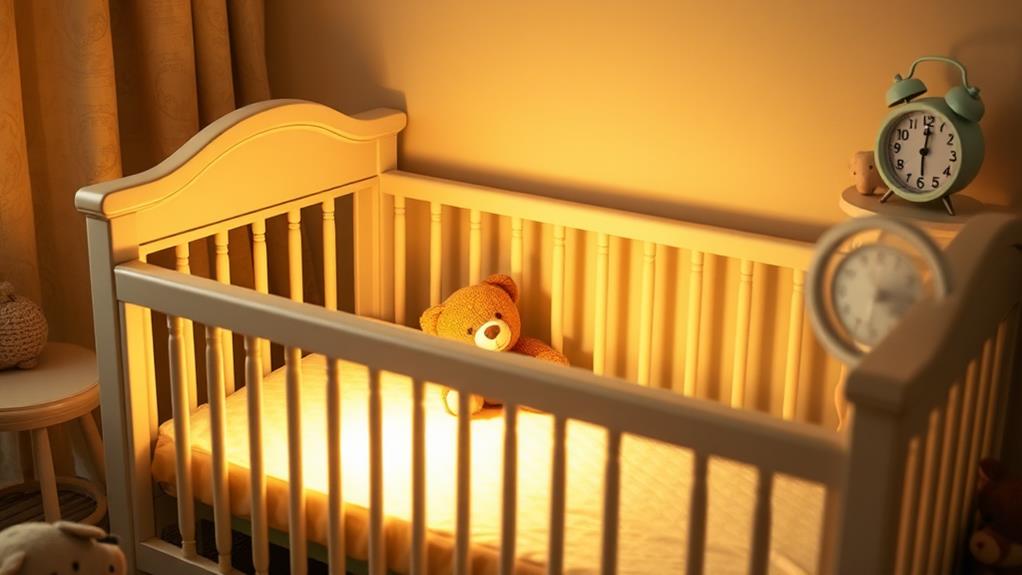
Establishing a consistent bedtime is crucial for helping your toddler feel secure and understand their sleep routine. When you set a regular bedtime, your child can anticipate when it's time to wind down, making the transition to sleep smoother.
Try to stick to a specific time each night, even on weekends. This consistency helps regulate their internal clock, making it easier for them to fall asleep and stay asleep.
Consider creating a calming bedtime routine that signals it's time for sleep. This could include activities like reading a story, singing a lullaby, or dimming the lights.
These rituals not only promote relaxation but also reinforce the idea that bedtime is a special time to bond.
If your toddler resists going to bed, remain calm and patient. Gently remind them that it's bedtime and reassure them that you'll be nearby.
This consistency can help reduce anxiety and make them less likely to climb out of the crib. Remember, the more predictable the routine, the more secure your toddler will feel, which can discourage adventurous attempts to escape from their crib.
Create a Safe Sleep Environment
Creating a safe sleep environment is vital to ensuring your toddler's well-being and reducing the likelihood of them climbing out of the crib. Start by making sure the crib meets safety standards. Use a crib that's sturdy, with slats no more than 2.5 inches apart, to prevent your little one from getting stuck.
Next, remove any toys or objects that could assist your toddler in climbing. While it's tempting to keep their favorite stuffed animals within reach, these can become stepping stones for an adventurous climber.
You should also check the mattress height. If your toddler is tall enough to stand, lower the mattress to the lowest setting, making it harder for them to climb out.
Consider using a sleep sack instead of blankets, as these keep your toddler warm without the risk of them climbing or getting tangled.
Lastly, ensure the room is free from hazards. Keep furniture away from the crib to eliminate any temptation to use it as a launchpad.
Offer a Reward System
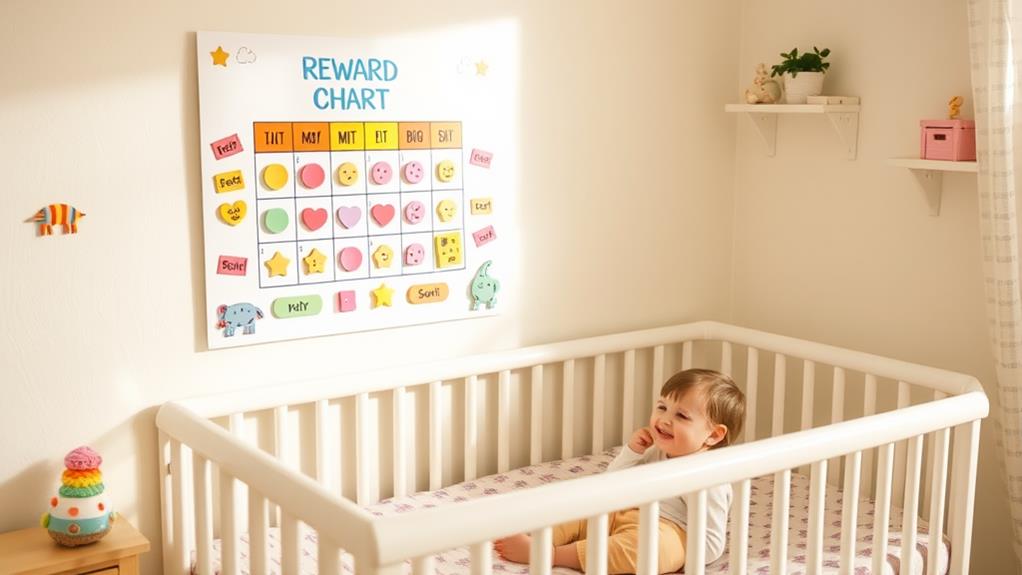
While it might seem challenging to keep your toddler from climbing out of the crib, implementing a reward system can motivate them to stay put during nap and bedtime.
Start by explaining the reward system to your toddler in simple terms. Let them know that if they stay in their crib until a certain time, they'll earn a small reward, like a sticker or an extra bedtime story.
Create a visual chart where they can track their progress. Each time they successfully stay in the crib, let them place a sticker on the chart. This not only makes it fun but also gives them a sense of accomplishment.
Make sure to celebrate their successes, no matter how small. Praise them enthusiastically when they follow the rules, reinforcing positive behavior.
If they don't stay in the crib, that's okay—just remind them about the rewards and encourage them to try again.
Consistency is key, so stick to the plan. Over time, your toddler will learn that staying in the crib leads to fun rewards, making nap and bedtime smoother for everyone involved.

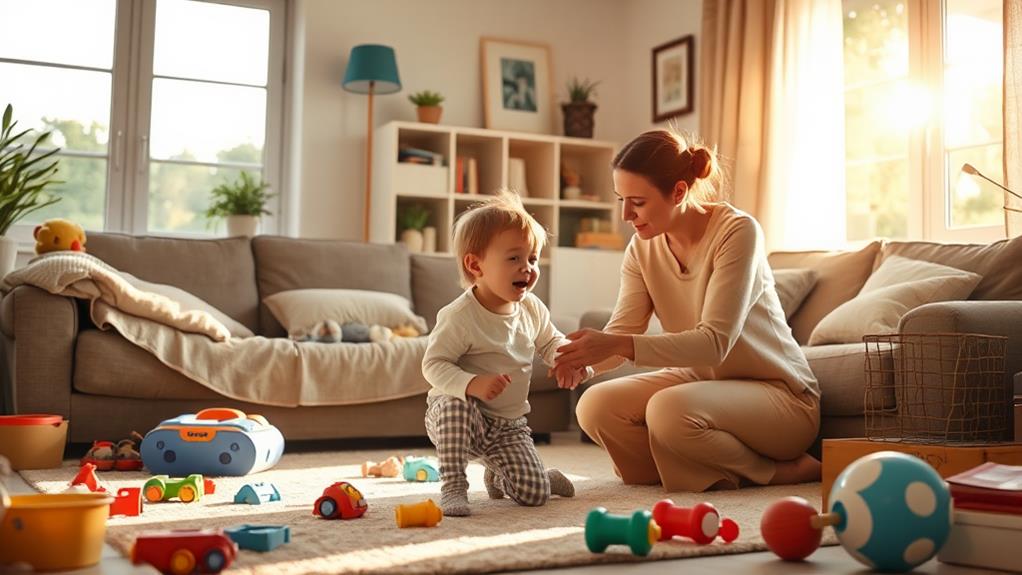

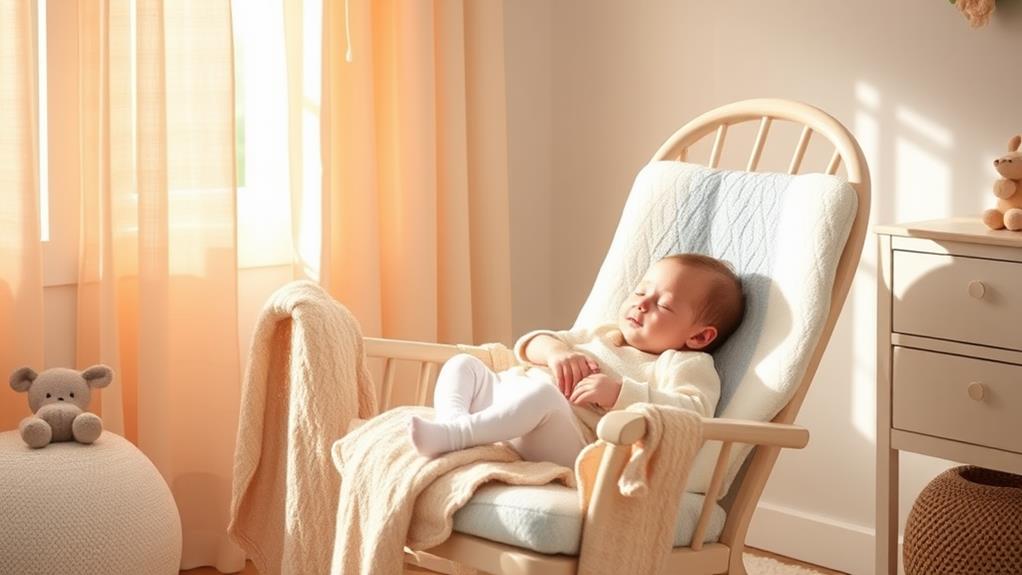










Post Comment